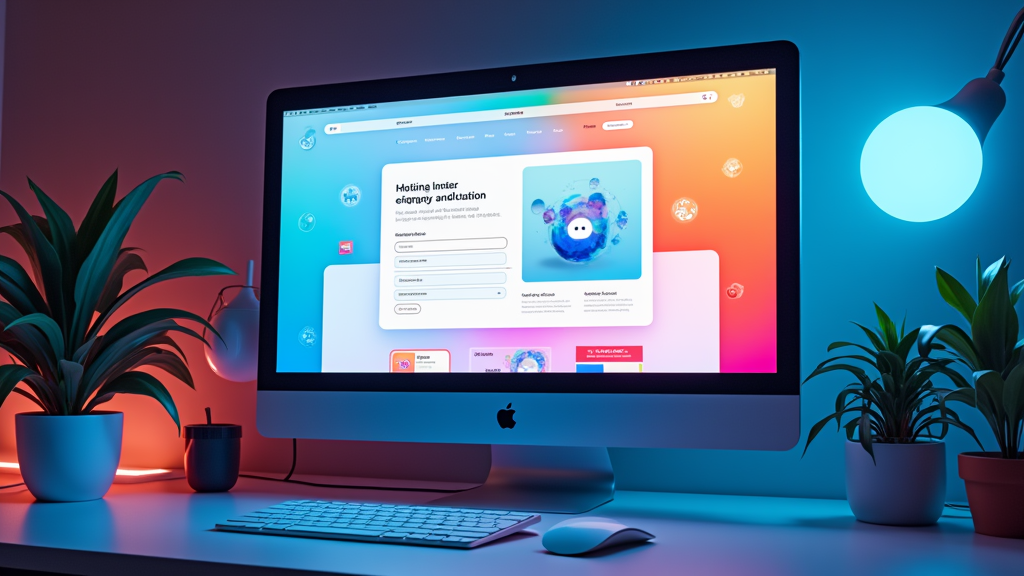Hi, It’s Cliff
Crafting a persuasive landing page can be both an art and a science in the world of affiliate marketing. It requires combining clarity, emotion, and design to drive visitors to take action. In this piece, I share my experience and insights on how to build landing pages that genuinely capture attention and convert traffic into leads or sales.

Key Elements for an Effective Affiliate Landing Page
Every landing page built for affiliate marketing should include a few key elements that capture visitor attention and help guide them toward the desired outcome. I believe that the most important elements include a strong headline, a clear value proposition, a prominent call-to-action (CTA), and components that build trust. These factors come together to create a page that both informs and motivates the visitor.
An eye-catching headline is essential because it’s the first thing visitors see. It needs to communicate the benefit of the affiliate product or service immediately. A subheadline often follows, offering more detailed context that supports the headline and draws the reader deeper into the page.
A well-placed call-to-action works as the guiding star. Buttons or links that prompt a next step help remove friction from the conversion process. Alongside these, adding social proof such as testimonials, user reviews, or endorsements increases trust. Potential customers tend to trust experiences shared by other users over generalized claims.
Additional elements, such as brief product descriptions that emphasize benefits over features, and concise supporting text, help keep the page focused. A landing page that highlights the benefits most relevant to the visitor’s needs stands a much better chance of converting. To further boost effectiveness, consider incorporating elements such as videos, interactive features, or even live chat options. These extras not only fill in any informational gaps but also create a more immersive experience that encourages visitors to stick around and explore what you have to offer.
Building a Persuasive Landing Page: Setup and Strategy
Setting up an effective landing page starts with a solid strategy. It is highly beneficial to plan out what you want your landing page to achieve before beginning the design process. Begin by clearly defining your target audience. Knowing who you’re speaking to makes it easier to tailor the content, tone, and style to suit the audience appropriately.
Next, map out the visitor journey. If the goal is to drive sales, then every element on the page should ultimately encourage that behavior. I recommend creating a simple layout that guides the visitor from a compelling headline through supporting content to a persuasive call-to-action.
This planning also includes answering some fundamental questions about your product or service. What pain points does it address? How does it provide value in a way that competitors do not? Answers to these questions help shape both the narrative and design of your landing page. It is also helpful to sketch a rough outline, jotting down ideas and potential layouts before committing to a final design. This preliminary work smooths the way for a more focused development phase.
In affiliate marketing, persuasive language plays a crucial role. Using words that evoke emotion and speak directly to the reader can have a significant impact on conversion rates. When you combine engaging text with a user-friendly layout, visitors are naturally led to the next step in the buying process. Often, a well-thought-out strategy, paired with continuous tweaks based on visitor feedback, will ensure that your landing page remains both relevant and practical.
Challenges to Consider When Optimizing Landing Pages
There are several challenges you may encounter when setting up and optimizing landing pages. Being aware of these issues in advance is very important so you can plan to avoid them. The most common hurdles include slow loading times, poor navigation, and failing to build trust with the visitor.
Loading Speed: Today’s visitors expect pages to open quickly. Even a few seconds of delay can lead to a loss of interest. Optimizing images, utilizing efficient coding practices, and selecting the right hosting provider are a few methods that can help improve page speed.
Mobile Responsiveness: The majority of web traffic now originates from mobile devices. Crafting a landing page that looks and works well on smartphones and tablets is essential. A design that scales correctly and offers an intuitive user experience across devices is crucial in keeping mobile visitors engaged.
Trust Signals and Legal Disclosures: Trust is the backbone of successful affiliate marketing. Including elements such as money-back guarantees or privacy policies reassures visitors that the recommendation has been carefully considered. Clear legal disclosures can help avoid potential issues, while also building confidence in your affiliate offer.
It is good practice to consider these potential pitfalls early in the planning stage. In addition to technical and design challenges, it is also crucial to monitor user behavior and gather feedback on a regular basis. This ongoing process enables you to refine layouts, copy, and functionality to meet visitor expectations better. Regular assessments help you identify issues before they become major problems and ensure that your landing page remains both visually appealing and functional.
Loading Speed
A landing page that takes too long to load risks losing potential conversions. Optimizing your code, compressing images, and utilizing browser caching options are effective methods for enhancing page speed. I have experienced cases where simply swapping out heavy graphics for optimized visuals made a big difference in performance. It is always a good idea to run tests across different connection speeds and devices to guarantee a smooth experience for everyone.
Mobile Responsiveness
Adjustment for mobile devices is key. The layout and CTAs should be easy to interact with on a small screen. Simple design tweaks, like larger fonts and reflowing design elements, are effective strategies to ensure that your page remains visitor-friendly, regardless of the device used. Beyond basic adjustments, consider the touch interface elements such as button size and spacing that make interactions more natural and less prone to accidental taps.
Trust Signals and Disclosures
Visitors need reassurance that they are making a safe decision. Integrating trust badges, secure payment symbols, or simply including testimonials can work wonders. Additionally, maintaining transparency through clear legal disclaimers and privacy statements is crucial for building credibility. Taking the time to explain the rationale behind your claims and providing additional evidence can further fortify trust.
These challenges can be managed through careful planning and continuous testing of different components of your landing page. A proactive approach that anticipates these issues will not only save time in the long run but also create a smoother experience for your visitors, leading to improved conversion rates.
Advanced Techniques to Turn Up Conversion Rates
After mastering the basics, there are numerous strategies to enhance the effectiveness of your landing page further. One advanced technique is to refine the copy using persuasive language and emotional triggers.
Persuasive language should not feel forced. Instead, it should reflect genuine benefits and address the visitor’s needs and emotions. I suggest using a tone that resonates with the target audience, focusing on the benefits rather than just technical details. Words that evoke trust and optimism can encourage readers to envision their success if they follow the guidance provided on the page.
Using emotional appeal effectively involves highlighting the transformation the visitor might experience. For example, instead of listing features, explain how your product can simplify a day-to-day problem. This method usually involves storytelling techniques that engage the reader on a personal level. Detailed anecdotes, case studies, or even fictional scenarios can create a vivid picture of the benefits, making the desired outcome more tangible for the reader.
A/B testing stands out as one of the best strategies to optimize these advanced techniques. By comparing different variations of headlines, images, text, and calls-to-action (CTAs), you can determine which version yields the best results. In my experience, testing one element at a time provides clear insights into what clicks best with your audience.
Another focus should be on the power of micro-conversions. These are small steps visitors take before converting, such as signing up for a newsletter or clicking on a secondary link. These actions can provide you with valuable data on which aspects of your persuasive language and emotional cues are practical, enabling you to refine your messaging further. Consistent monitoring and adjustments based on these micro-moments contribute to a gradual yet sustainable increase in overall conversion rates.
It is essential to measure and adjust your strategies continually. Regular reviews and refinements help ensure that your landing page remains up-to-date, enabling you to stay ahead of trends and shifts in consumer behavior. This commitment can lead to a significantly improved return on investment over time.
Visual Design: Importance and Best Practices
Visual design plays a significant role in the overall success of a landing page. The way information is presented graphically affects both user experience and conversion rates. I have learned over time that a clean, visually appealing design helps direct the visitor’s focus toward essential elements, such as the CTA or product features.
An optimized landing page design achieves this by striking a balance between text and visuals. Here are some practical tips:
- Clean Layout: Avoid overwhelming the visitor with too many options or cluttered sections. A clear and straightforward design can make decision-making easier.
- Color Psychology: Use colors to evoke emotions that align with your offer. For example, calm colors might be used for financial products, while vibrant hues may work better for lifestyle items.
- Contrast and Readability: Ensure that key information, like your call to action, stands out by using contrasting colors and legible fonts.
- Visual Hierarchy: Place the most essential information in prime areas on the page. This might involve using larger headers or key images near the top.
Visual elements should support the overall message. Consistency in color scheme, typography, and image style helps strengthen the credibility of the landing page. Additionally, consider incorporating subtle animations or interactive elements that guide the viewer gradually through the story you are telling. These choices, when made carefully, add layers of engagement without distracting from the core message.
Moreover, testing different visual components with real users can provide invaluable feedback. Observing how visitors react to other images and layouts can reveal new opportunities to tune the design further. Over time, these adjustments accumulate, making a noticeable difference in conversion and engagement rates.
Frequently Asked Questions
Here are some common questions for anyone looking to craft a landing page for affiliate marketing:
Question: What key elements should be included on a landing page to capture the attention of potential customers?
Answer: A landing page should feature a compelling headline, a clear value proposition, persuasive copy, strong calls to action, and trust borders through testimonials or social proof. The goal is to engage visitors quickly and guide them towards taking a desired action.
Question: How can persuasive language and emotional appeal step up the landing page?
Using persuasive language that resonates with the emotional needs of your audience can be highly effective. By describing benefits that address specific pain points and aspirations, the language builds a connection. Storytelling and benefit-focused copy prompt visitors to envision an improved future. This approach has proven effective for many businesses, enabling them to create a more personalized experience.
Question: What role does visual design play in the success of an affiliate marketing landing page?
Visual design plays a crucial role in making a landing page both attractive and user-friendly. A clean design with a balanced layout and consistent color scheme directs the visitor’s focus toward key messages. Visual elements, such as images, icons, and ample whitespace, not only guide attention but also help establish brand credibility. Detailed attention to visual hierarchy can further guide the visitor on what to do next.
Question: How can A/B testing be utilized to improve landing page performance?
Answer: A/B testing involves creating two or more versions of a landing page and measuring which version performs better. This can include testing variations of headlines, call-to-action (CTA) buttons, layouts, or images. The insights gained from these tests enable you to adjust and optimize your page for improved performance over time. In many cases, a series of minor tweaks based on solid data eventually leads to significant improvements in conversions.
Wrapping Up Your Landing Page Strategy
Crafting a landing page that resonates with visitors requires a blend of good design, persuasive language, and continual testing. I have found that focusing on clarity and user engagement is essential. When you prioritize elements such as a compelling headline, benefit-driven copy, and a visitor-friendly design, you set the stage for better conversion rates in affiliate marketing.
Using A/B testing to refine each element of your landing page is not to be underestimated. Testing clearly shows which headlines, call-to-actions, or images evoke the best response from your target audience. As you gather more valuable insights, you can steadily refine your page to suit the evolving preferences of your audience better. Regular reviews help maintain a fresh approach, ensuring that your landing page continues to perform optimally over time.
This isn’t just about putting content on the page. It’s about understanding your audience, continuously adjusting your message, and presenting information in a way that resonates and connects. Every detail, from the headline to the final call to action, plays a role in turning casual visitors into engaged customers.
Start crafting your landing page today and use the insights shared here as a roadmap to step up your affiliate marketing success. With attention to detail and a willingness to adapt, your landing page can become a powerful tool that genuinely drives results.
Moreover, keep an eye out for emerging trends and feedback from your audience. Regularly updating and refining your approach will help you stay ahead in the competitive landscape of affiliate marketing. Consistent effort and a willingness to experiment can make all the difference in achieving a next-stage performance boost.
Tip
Should you be looking for help starting an online business, CLICK here
If I can help you, please leave a message, and I will reply. Please feel free to leave any comments you may have on this website.
Cheers
Companies pay careermarketingwithcliff.com a small commission or other compensation for promoting their website or products through their affiliate program.
Prices are exactly the same for you if your purchase is through an affiliate link or a non-affiliate link. You will not pay more by clicking through to the link.



Great insights on creating persuasive landing pages! I agree that a clear value proposition and strong calls-to-action are key to driving conversions. It’s also important to keep the design simple and focused. In my experience, adding trust signals like testimonials or reviews can really boost credibility. This article highlights some crucial tactics for affiliate marketers looking to optimize their landing pages.
When I first embarked on my journey into the world of affiliate marketing, I quickly realized that it was much more intricate than I initially anticipated. At the outset, the concept of online marketing seemed straightforward; however, as I delved deeper, I discovered a web of complexities and nuances that required a more nuanced understanding. In my early days, I struggled to grasp the significance of various components that play a crucial role in effective marketing strategies. Key elements, such as landing pages, seemed daunting, and I often found myself overwhelmed by the abundance of information available. Little did I know that mastering these tools would be essential for my success in this competitive field.
As I navigated this new terrain, I held the belief that simply creating a website would be sufficient to generate revenue. Like many beginners, I believed that having an online presence was the key to success. However, it soon became apparent that a mere web page was only the tip of the iceberg. The reality of affiliate marketing is that it requires a targeted approach, with a deep emphasis on optimizing user experience and engagement. Websites must be thoughtfully designed with specific goals in mind, such as conversions and customer interaction. This understanding prompted me to reevaluate my initial strategy and seek out resources that would help me build a more compelling online marketing framework.
Through this journey of discovery, I learned that developing a successful affiliate marketing strategy is akin to setting the foundation for a house. Each element must be carefully constructed and aligned with overarching business objectives. Landing pages, with their potential to capture leads and drive conversions, emerged as vital components that could significantly influence my marketing outcomes. As I gained knowledge and experience, I recognized that to thrive in this competitive landscape, I would need to embrace the complexities of the marketing business and continually adapt my strategies. This realization marked the beginning of a transformative experience that has shaped my approach to affiliate marketing, propelling me toward achieving my goals with renewed enthusiasm and understanding.